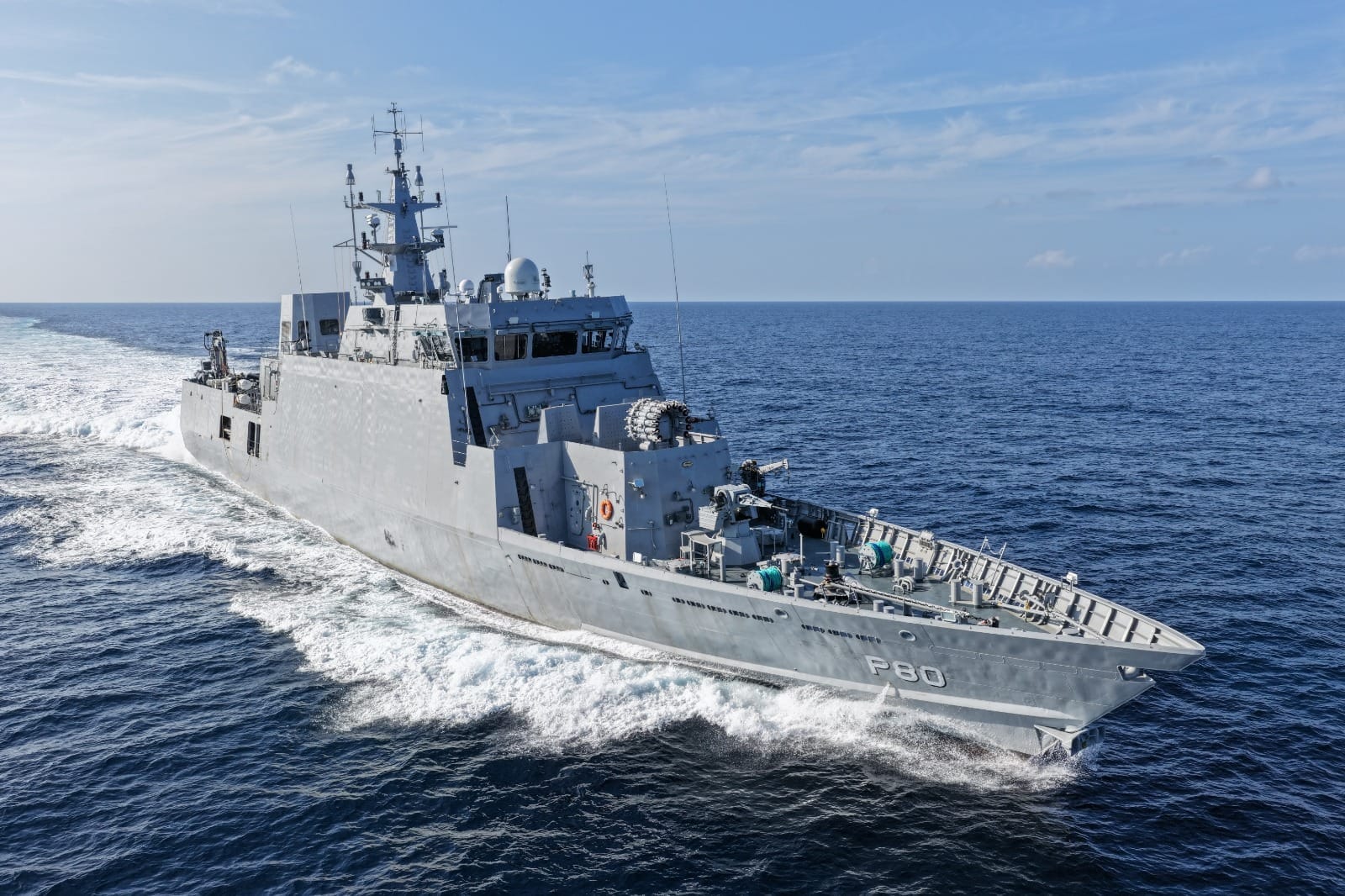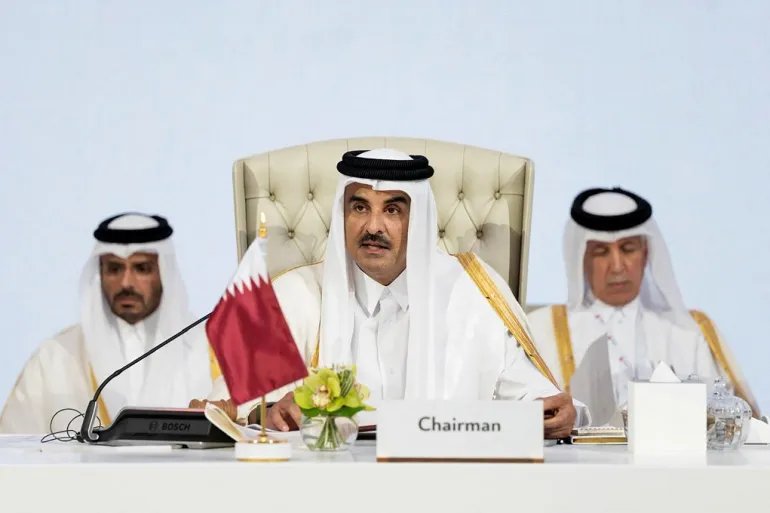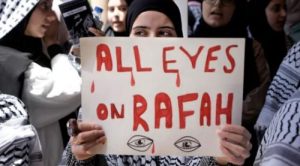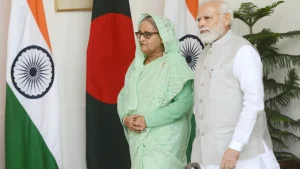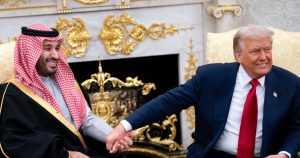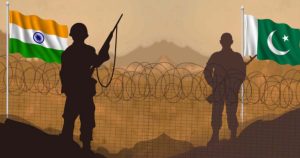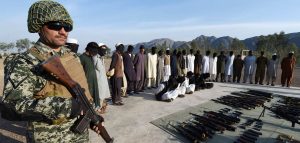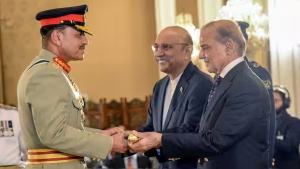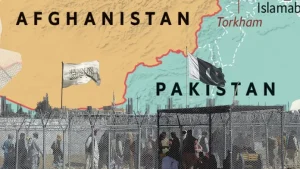Executive summary
The Arab-Islamic Emergency Summit convened in Doha on 15 September 2025 produced a sweeping, rhetorically robust communiqué but little operational substance. Its language reaffirmed long-standing positions – condemnation of Israeli actions, and support for the two-state solution – in addition to calls for legal measures, and praise for Qatar’s mediation, but crucially it left the hard parts deliberately vague. There was no calibrated sanctions regime, no credible mechanism to enforce an arms embargo, no timeline, and no concrete, collective steps to alter material leverage. The final communiqué contained important diplomatic and legal talking points that can be used in advocacy and litigation, but it is unlikely, in its present form, to change Israeli behaviour or the calculus of its external backers. The document therefore reads as a defensive diplomatic posture that galvanizes rhetoric without the hard policy instruments that could translate words into deterrence.
1. The Snapshot of the Summit
Some 57 Arab and Islamic states representing a population north of two billion and a vast aggregate of economic and military resources met in the Qatari capital to respond to an unprecedented aerial strike that targeted a host state and, by extension, international mediation channels. The summit’s communiqué catalogued strong positions including categorical condemnation of the 9 September strike, expressions of solidarity with Qatar, a renewed embrace of the two-state solution, and calls to “take all possible legal and effective measures,” including sanctions and judicial avenues. Yet the document stops short of specifying timelines, enforcement instruments, or an institutional framework to operationalize its demands. In short, the communique was nothing but rhetoric without credible tools.
2. What the communiqué actually says (and why it matters)
The final communiqué is comprehensive in scope. It:
• Condemns the Doha strike in the strongest terms and frames it as a breach of sovereignty and international law.
• Reaffirms solidarity with Qatar and praises Qatar’s “civilized, wise, and responsible stance” in continuing mediation efforts.
• Declares the two-state solution the only viable political path and calls for implementation along 4 June 1967 lines.
• Calls on Organization of Islamic Cooperation (OIC) members and Rome Statute states to pursue legal steps and to consider sanctions, arms embargoes, suspension of transfer of military materials, and even a review of Israel’s United Nations (UN) membership.
• Mandates OIC members that are parties to the Rome Statute to support enforcement of International Criminal Court (ICC) arrest warrants and to pursue compliance with the International Court of Justice (ICJ) provisional measures.
These are important statements for international law and advocacy and create a collective record that can be cited in courts, petitions, and diplomatic campaigns. But the document’s operational ambition is limited as it is heavy on exhortation and light on executable architecture (who coordinates sanctions, what thresholds trigger steps, who verifies compliance, how do we manage the political-economic blowback for producer states?).
3. Why words will not substitute for leverage
Three hard realities blunt the communiqué’s immediate impact.
First – the politics of enforcement. During the summit there were calls for sanctions, suspension of military supplies, and legal measures. But implementing such moves requires political will, domestic legislative steps, and risk appetite. Many OIC and Arab capitals that could apply material pressure maintain security, trade, or strategic ties with Western allies, and some have already normalized relations with Israel. Those states will hesitate to deliver unilateral or joint actions that risk alienating crucial partners or exposing themselves to economic counter-measures.
Second – the U.S./Western axis. Israel remains backed, materially and politically, by Western military support, intelligence cooperation, and diplomatic shields. A regional call for punitive measures will only bite if it can either (a) disrupt the military and logistics pipelines that sustain Israeli operations, or (b) marshal Western partners to join punitive steps. The communiqué invites international pressure, but it does not present a credible multilateral strategy to compel Washington or key European capitals to alter policy.
Third – the fragmentation of the region. The summit’s own attendance patterns tell a story. Several Gulf and Maghreb leaders were either absent or represented at lower level; some states with normalization agreements were present but politically constrained. The Sultan of Oman, the President of the United Arab Emirates (UAE), the King of Bahrain, and the Emir of Kuwait were absent, and despite the presence of the Saudi Crown Prince, he did not deliver a speech at the meeting. The Maghreb countries also had weak representation, as the Tunisian and Algerian presidents were absent, as was the King of Morocco.
Without unity among the most consequential regional actors and without a shared appetite to risk economic or diplomatic isolation, the “call for sanctions” risks remaining declaratory. (Attendance and tone are political signals and the communiqué cannot paper over underlying fissures.)
4. Legal instruments: potential, limits, and misuse
The communiqué’s legal focus is noteworthy. It explicitly tasks OIC members who are parties to the Rome Statute to support ICC enforcement and to take measures consistent with ICJ provisional measures. It also calls for examining Israel’s UN membership consistency. These lines are useful for several reasons:
• They create a concerted legal narrative that reinforces other judicial initiatives (South Africa’s ICJ filing, individual state ICC referrals).
• They give domestic courts and parliaments political cover to explore targeted measures (asset freezes, travel bans for identified individuals).
• They elevate the dispute into a rule-of-law register, which can mobilize nongovernmental organizations (NGOs), human rights bodies, and sympathetic capitals.
But legal action faces limits. ICC enforcement depends on states’ cooperation; the ICJ can issue orders but has limited coercive capacity. Legal strategies can gradually constrict political space for Israeli leadership, but they do not stop kinetic operations in real time. They also risk being cast by opponents as politicized, which will hamper universal acceptance and implementation. The communiqué therefore provides a legal toolbox, but not the machinery to use the tools effectively.
5. The two-state reaffirmation: politics out of sync with reality
The communiqué reaffirms the two-state solution based on 4 June 1967 lines. Declaring commitment to that framework is symbolically important and aligns the OIC with broad international consensus. But reality on the ground – fragmented West Bank geography, de facto annexation practices, political rejection of partition by some Israeli leaders, and the humanitarian catastrophe in Gaza – makes the two-state reference increasingly aspirational rather than actionable.
By doubling down on a framework that many delegates and populations see as moribund, leaders created a rhetorical safe space for consensus while avoiding the thornier task of articulating transitional steps toward Palestinian self-determination under present conditions.
6. Political signaling: praise for Qatar and the paradox of mediation
One of the communique’s striking tones is praise for Qatar’s conduct. The statement lauds Qatar’s “civilized, wise, and responsible stance” in continuing mediation and hosting negotiating delegations even after being attacked. That phrasing is politically delicate. It acknowledges Qatar’s pragmatic, facilitative posture while implicitly accepting the logic – embodied by some critics – that hosting negotiations for all sides carries risk.
There is a real paradox here. Mediation played an essential humanitarian and de-escalatory role over the years. But the strike on Doha highlights a vulnerability for any state that hosts contact channels – the risk that the host becomes a target. Praising continued mediation without recalibrating how mediation is protected (status of negotiators, sanctity of venues, multilateral guarantees) leaves Qatar and future mediators exposed. The communique could have paired praise with a call for explicit international guarantees for neutral mediation venues. This was, therefore, a missed opportunity.
7. The leadership gap: representation and credibility
The summit’s modest representational footprint from parts of the Gulf and North Africa and the subdued public profile for some leaders matter. A summit’s credibility isn’t just its final statement, it’s the political weight of those who attend, speak forcefully, and are prepared to act afterward. Absences and low-level delegations signal constraints including domestic priorities, diplomatic hedging, or reluctance to confront external patrons. The communiqué’s reach is therefore constrained by the political capital leaders were willing to spend.
That political calculus also shaped Netanyahu’s response – dismissive and scornful. His dismissal feeds on his reading of the region’s divisions: when leaders are unwilling to close ranks on high-cost measures, public denunciations provide him with a cheap win in international optics.
8. What the summit could have done — a menu of credible, proportional options
If the objective was to translate words into leverage, a different design would have paired rhetorical unity with legally credible, politically executable steps. A pragmatic menu might include:
1. A calibrated sanctions package with triggers. The summit should have defined a narrow list of punitive measures tied to measured escalations (e.g., targeted asset freezes, travel bans, suspension of trade) and committed a coalition of willing states to implement them in a coordinated window.
2. An arms transfer moratorium mechanism. It should have established a verification cell within the OIC to monitor and publicize weapons transfers to the theatre and to coordinate suspension among supplier states in the region.
3. Protection protocol for mediation venues. The summit should have negotiated international guarantees, ideally with UN participation, for neutral venues, including rapid fact-finding missions and immediate referral protocols.
4. Legal task force. It should have moved beyond exhortation and set up an OIC legal coordinating unit to standardize evidence packages, synchronise ICC/ICJ actions, and provide legal aid for victims’ documentation.
5. Economic counter-levers. The Muslim leaders should have agreed on a pragmatic energy and trade signaling toolkit (short, targeted measures, combined with contingency supports for producer states) that does not collapse partner economies but demonstrates capacity to impose costs.
6. Public diplomacy and grassroots linkage. The participants should have coupled statements with mobilized civil society and diaspora campaigns to raise costs for enablement of impunity in Western capitals.
These steps require sacrifice and coordination something the communiqué precisely avoided. Yet even a limited coalition willing to act could shift calculations if the design prioritized specificity, timing, and burden-sharing.
9. A diplomatic baseline, not a turning point
That outcome is not an accident. It reflects the structural constraints of the region: divided politics, asymmetric dependencies, and a strategic landscape shaped by external patrons. Doing better is possible, but it requires political leadership willing to convert rhetoric into calibrated, costly, coordinated action. Until such leadership emerges, summits risk becoming a ritual of denunciation rather than a mechanism of deterrence.
Policy takeaways (for sponsors and partners):
• Use the communiqué as legal and diplomatic ammunition – document, standardize, and share evidence for ICC/ICJ processes.
• Build a “coalition of the willing” to pilot selected punitive measures with clear triggers and limited scope.
• Protect mediation by negotiating international guarantees for venues and negotiators.
• Develop an OIC legal coordination cell to turn words into synchronized filings and enforcement efforts.
• Align public diplomacy with targeted economic measures to maximize political cover and minimize blowback on producers.
Doha’s summit mattered as a statement of outrage and a bookmark in the diplomatic record. But if the goal was deterrence and to change the operational behaviour of an actor that believes it can act with impunity, the communiqué ultimately falls short. The next step for serious policy makers is not more ritual summits but hard, coalition-building work by defining instruments, accepting costs, and then executing. Only then can substantive outcomes be expected.



